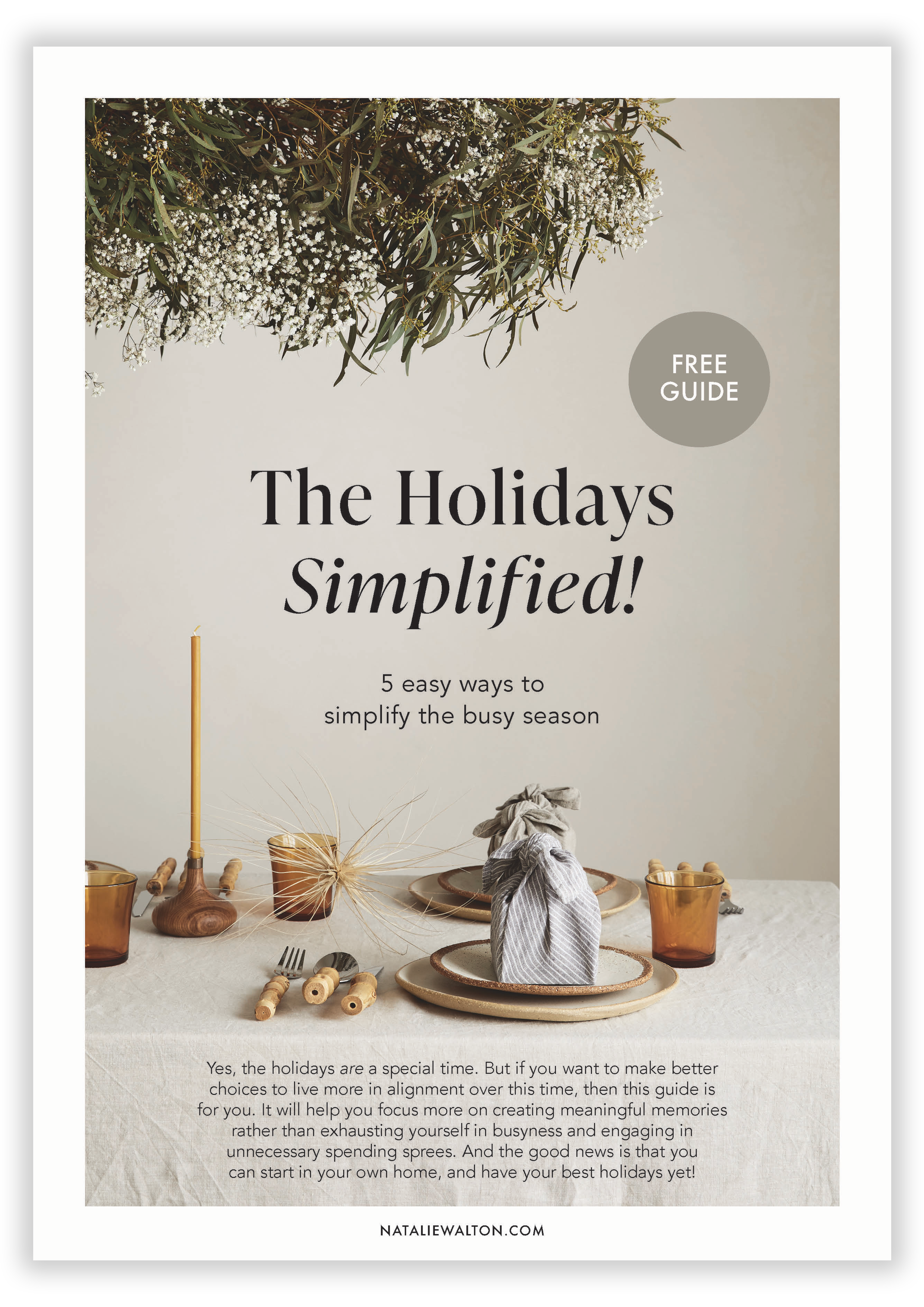A Guide to Handling Unwanted Gifts
With the holidays coming up, I wanted to touch on a topic that many of you might be thinking about right now, particularly if you have kids, which is how to graciously preempt unwanted gifts.
We’ve all experienced that tricky situation where you or your kids are given something that you just don’t want to add to your home.
It could be because it’s…
Unlikely to get used or played with more than once
Impractical to store, or you just don’t have a place for it
Plastic and/or poorly made and prone to falling apart
Mismatched to your child’s skill level or stage of development
Just not to your tastes and preferences
To help you avoid these uncomfortable situations, particularly around the holidays, I thought I’d share a few strategies that have worked for my family.
1. Address gift-giving ahead of time
The first step is to make your feelings known, otherwise you’ll keep experiencing the issue year after year. It’s important to share why this is important to you, and gently but firmly set expectations with family and friends. This approach makes life easier for everyone.
For example, several years ago we chose to take the ‘no gifts’ approach to our kids’ birthday parties. The invitations specifically request a handmade card instead of a birthday gift, which always results in the sweetest creations from friends and family. Our kids actually enjoy this approach more in many ways, partly because we switched over when they were young, but also because they understand that we simply don’t need any more stuff at home. As they get older, they also appreciate more and more that the best gift is getting together with their friends to celebrate.
2. Guide the gift-giver in the right direction
Often people give gifts that aren’t suitable because they don’t have enough knowledge about your current preferences. It’s up to you to help them make more informed choices. You’ll be happier with what is coming into your home, and they’ll be excited to see that their gifts are a big hit.
For example, grandparents might not know what their grandchildren currently need or want, especially if they live farther away. Help them choose a gift your kids will use and love by providing a list (and don’t be afraid to be specific!).
Over the years, lists for our kids have included things like…
The next book in their favourite series, or other titles that match their reading level
Sports gear, such as bike gloves and a specific style of bike helmet
New ballet slippers or ballet clothes
School clothes from their favourite brands (our children don’t have a uniform)
If you share this list well in advance of the occasion, or send specific links when the brand is having a sale, you can help gift givers make purchases at the best time.
For more sustainable gifting, focus on quality items that can be passed down to the next child or to another family, which allows the gift to live on instead of gathering dust or getting thrown out.
I’m personally not big on gifts for myself (sometimes I actually prefer to purchase things for myself as my Christmas gift) but in past years, my own lists have included things like…
A kitchen gadget I know we will use every day
Plants for the garden
A specific home decor item, such as a mirror
A gift certificate for a facial or massage
Think about things you’re excited about and would use daily, but that you likely wouldn’t purchase for yourself.
Another great strategy to avoid clutter is to request experiences over things. For example, the grandparents could invite the kids to a special evening out to see The Nutcracker performed live. Or if they live far away, see if there’s a kids’ attraction near them that could be incorporated into your visit. Even something as simple as a movie night can be so much fun when you lean into it and make it a special occasion.
If family and friends are still tempted to buy gifts for your kids, remind them that these memories will be treasured far longer than any toy or thing.
3. Accept the gesture, not the gift
What happens if you did the work to set expectations in advance, request ‘no gifts’ or provide a specific list, and then you still end up receiving a gift that you don’t want?
That’s bound to happen, and there’s a way to handle it graciously.
In general, it’s best to accept the gesture and express gratitude for the thought that went into it – but you don’t have to keep the gift.
After an appropriate amount of time, it’s your choice if you want to donate it, or give it to someone who would appreciate it more.
In special cases, such as family heirlooms, use your best judgement and be tactful – but remember that you ultimately get to decide what ‘stuff’ lives in your home. You might document it with a photo, or perhaps pass it along to a family member who would appreciate it even more. You can cherish the memory and meaning behind something without physically holding onto it.
To summarise –
1. Be clear about your gift preferences.
2. Guide gift-givers in the right direction.
3. If you still receive an unwanted gift, appreciate the gesture, then let the item go.
I hope you find this helpful in this season of giving and receiving.
If you’re looking for more ways to simplify the holidays, don’t miss my free guide below!
P.S. For more ways to celebrate without buying new, check out my FREE GUIDE to simplifying the holiday season.
WHAT’S INSIDE
Strategies for prioritising what’s most important to you
5 practical ways to simplify and let go of stress
25 ideas for more sustainable celebrations


